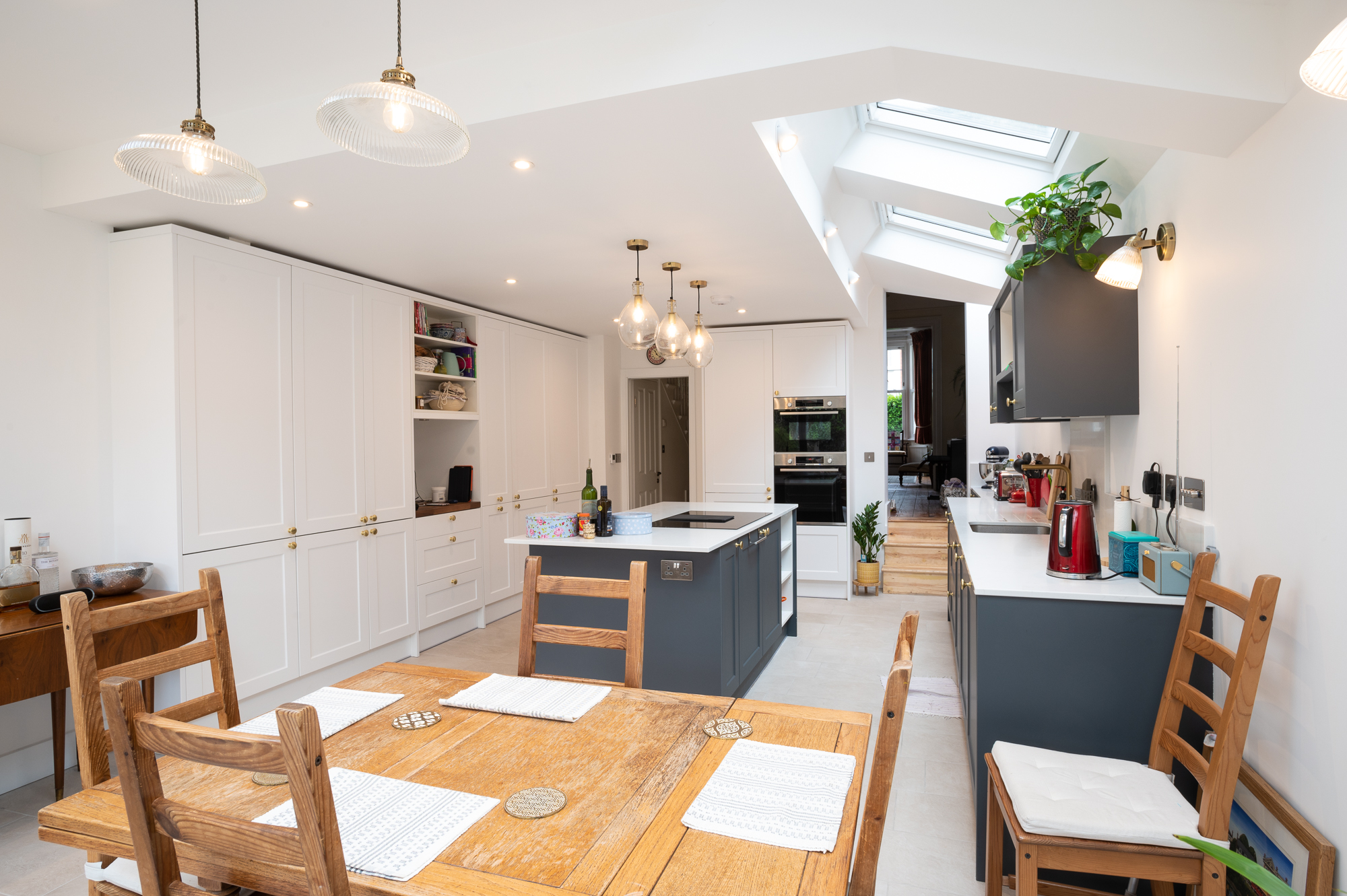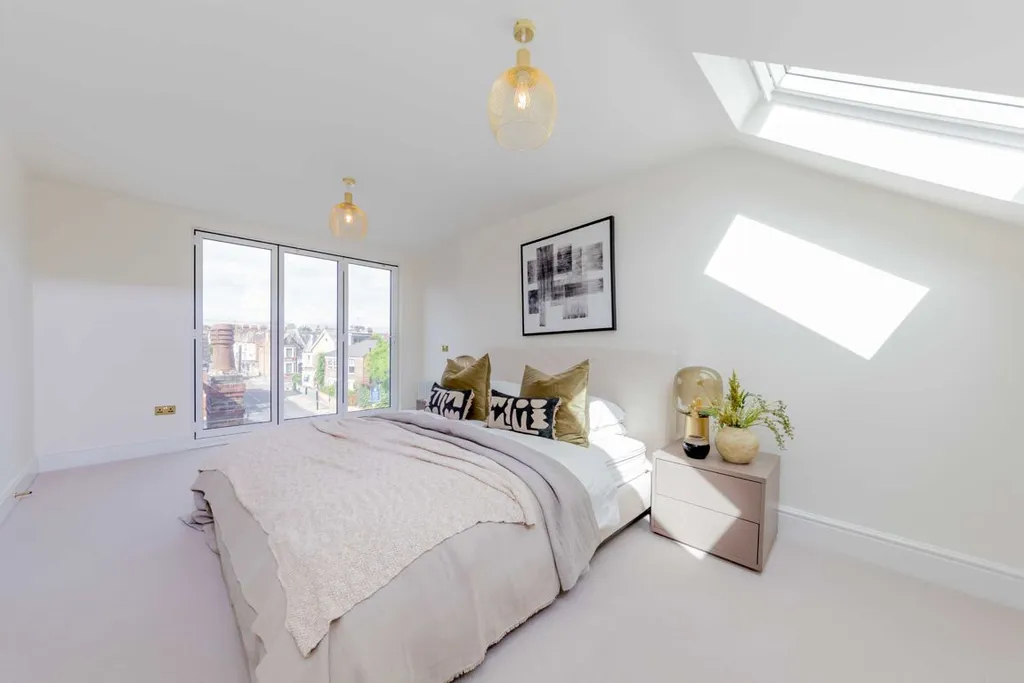A pitched roof is a timeless classic. It is what we naturally visualise when we picture a home. Period architecture has been using this design for centuries. There’s more to what meets the eye. From energy-saving to durability, the pitched roof has many secrets that preserved its success. House extensions can utilise several roof designs that either blend in with the existing architecture or contrast it. Today, we are looking at pitched roof single-storey extensions and whether they are right for your home.
What is a Pitched roof extension?
A pitched roof extension is an extension that has a pitched roof. A pitched roof slopes downwards. In most cases, it slopes on either side from a central ridge. When it does, it is called a double-pitched roof. When there’s only one slope, it is called a single-pitched roof. It is feasible for all extension types – Side Infill, Rear Extension, and Wraparound.

Benefits of a Pitched roof extension
Aesthetic Appeal – pitched roofs are visually pleasing and seamlessly integrate into a traditional house. These roofs add extra architectural features, such as beams and sloping ceilings, ideal for pendant lights. They also complement various architectural styles, making them a versatile option for different types of homes.
Effective Drainage – the sloping design allows rainwater to drain off easily, preventing water pooling and potential water damage. Snow and ice also slide off better.
Loft Space – pitched roofs create usable loft space, offering additional storage or the potential for loft conversions to create extra living areas, bedrooms, or home offices.
Natural Ventilation & Light – the pitched shape allows for better natural ventilation through roof vents or gable windows, enhancing indoor air quality.
Insulation Efficiency – pitched roofs can accommodate more insulation than a flat roof, improving energy efficiency and helping to reduce heating costs. Did you know the average UK home can lose up to 25% of its heat through the roof?
Longevity & Durability – pitched roofs are designed to shed water effectively and are generally more durable, with a longer lifespan than other types of roofs.
Weather Resistance – the steep slopes of pitched roofs offer better resistance to strong winds, snow, and hail storms, making them well-suited for unpredictable weather.
Versatility – pitched roofs can be customised with various materials, such as tiles, slates, zinc, or shingles, allowing homeowners to achieve the desired look for their property.
Planning Permission – in certain instances, planning departments prefer the pitched roof design. They can also help you overcome particular planning constraints.

Is a Pitched Roof Single Storey Extension Right for Your Home?
Suitability depends on multiple factors. Here are key considerations that can affect your decision;
Aesthetic Compatibility – as we established earlier, a pitched roof has a more traditional appearance than flat roofs, which can look modern. If you want your extension to resemble the style of your period home, choosing a pitched roof will achieve that. Some want contrast for their extensions, while others prefer a unified look.
Available Space – assess the available space for your extension. A pitched roof extension may require more horizontal space due to its sloping design, so ensure you have sufficient room for the extension without compromising functionality.
Purpose – why are you building your extension? Is it a new bathroom, kitchen extension, utility room, garden room, or dining area? Consider the purpose. While a WC/bathroom or utility room may work well with a flat roof, a garden room or a dining area may benefit from a pitched roof design. More rustic designs work well with pitched roofs. They are also perfect for bedrooms with bunk beds and additional loft space for storage.
A pitched roof creates a vaulted ceiling and is more airy, removing the claustrophobic feeling in small spaces. It is a useful design feature for spaces like a home office, where you would spend a lot of time.
Ability to integrate utilities – pitched roofs have pros and cons when installing showers, roof windows, and certain types of light fixtures. Flat roofs can maximise space for shower rooms, hanging lights benefit from high roof ridges, and roof windows on sloped ceilings are easier to operate.
Budget – pitched roofs are more expensive due to the complexity of the design and materials involved.
Planning Permission – check with your local planning authority regarding permitted development rights and planning permission requirements for the proposed extension. Some areas may have restrictions on the type of roof design allowed.
Conclusion
There is no doubt that the pitched roof is a visual pleaser. However, it has varying functionality depending on the space you create. Whether to choose a pitched roof for your extension depends on a range of factors, from size to your budget. Good Design & Build is a design-first company that offers expert consultation and bespoke plans to create stylish and functional spaces. Not sure if a pitched roof is right for your plans? Book a free consultation with us today.




